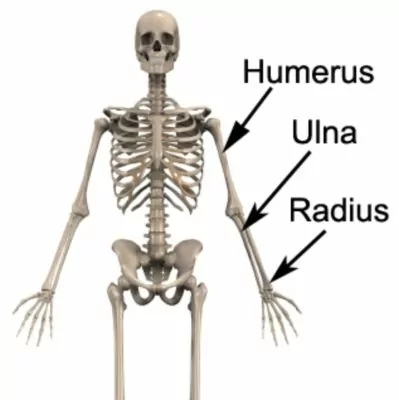Humerus Anatomy: Structure and Function
Updated:
The humerus is the long bone that extends from the shoulder to the elbow in the upper arm. It is the largest bone in the upper limb and plays a critical role in the function and mobility of the arm. In this article, we will explore the anatomy of the humerus, including its bony landmarks, muscular attachments, and related injuries.

Bony Landmarks of the Humerus
The humerus has two ends and a middle section. The proximal end of the humerus is the upper end that articulates with the scapula at the glenohumeral joint, forming the shoulder joint. The distal end of the humerus is the lower end that articulates with the radius and ulna at the elbow joint. The middle part of the humerus is curved and has a smooth surface, making it one of the strongest and most resilient bones in the body.
The humerus also has several bony landmarks that provide attachment sites for ligaments and muscles. The greater tubercle is a large, lateral prominence on the proximal end of the humerus that serves as the attachment site for the rotator cuff muscles. The lesser tubercle is a smaller, anterior prominence on the proximal end of the humerus that also serves as the attachment site for the rotator cuff muscles. The deltoid tuberosity is a rough area on the lateral aspect of the middle of the humerus that serves as the attachment site for the deltoid muscle.
Humerus Anatomy: Muscular Attachments
The humerus has several muscular attachments that are important for the movement and stability of the shoulder and elbow joints. The rotator cuff muscles attach to the greater and lesser tubercles of the humerus and help to stabilize and rotate the shoulder joint. The deltoid muscle attaches to the deltoid tuberosity of the humerus and helps to abduct (side elevation), flex (forwards elevation), and extend the arm. The biceps brachii muscle attaches to the proximal end of the humerus and helps to flex the elbow joint.
Injuries of the Humerus
The humerus is susceptible to various types of injuries due to its function and location. Fractures of the humerus can occur due to falls, direct trauma, or overuse injuries. These fractures can cause pain, swelling, and deformity of the arm, requiring medical attention. Dislocations of the shoulder joint can also cause damage to the humerus, causing pain and limited range of motion. Arthritis and bursitis can also affect the humerus, causing pain and inflammation of the joint.
Conclusion
The humerus is a crucial bone that plays a pivotal role in the stability and mobility of the upper limb. Its bony landmarks and muscular attachments allow for a wide range of movement, while its resilience and strength protect it from injuries. Understanding the anatomy of the humerus can help to prevent and manage injuries, allowing for optimal function and performance of the shoulder and elbow joints.
Humerus Anatomy References:
“Humerus Anatomy” by Healthline (https://www.healthline.com/human-body-maps/humerus-bone#1)
“Humerus Anatomy” by Teach Me Anatomy (https://teachmeanatomy.info/upper-limb/bones/humerus/)

Link to this Page
If you would like to link to this article on your website, simply copy the code below and add it to your page:
<a href="https://physioadvisor.com.au/health/anatomy/bones/humerus-anatomy”>Humerus Anatomy: Structure and Function – PhysioAdvisor.com</a><br/>Learn about humerus anatomy including bony landmarks, muscular attachments and common injuries on PhysioAdvisor.
Return to the top of Humerus Anatomy: Structure and Function.
